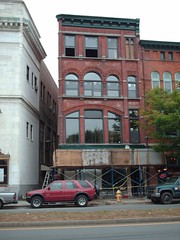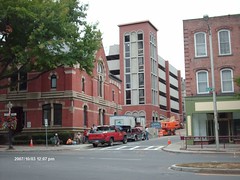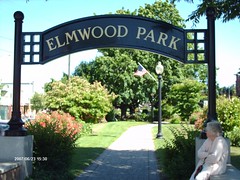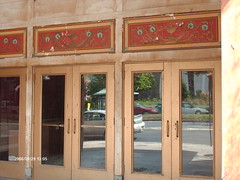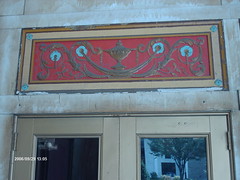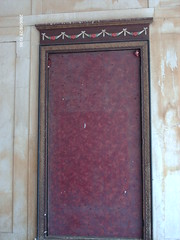 I remember how exciting it was to get my driver's license and my first car. I was 21 and had just moved to Connecticut after graduating from college. I had lived in New York City for four years and Dallas, TX before that, both of which have pretty good public transportation, and I had never before needed a car. It took many years for the novelty to wear off, but wear off it did, and I think it was primarily due to the interminable hours of sitting in bumper-to-bumper traffic on I-84. The OPEC oil embargo of 1972 was my first clue that there might be something fundamentally unsustainable about the car culture I found myself in.
I remember how exciting it was to get my driver's license and my first car. I was 21 and had just moved to Connecticut after graduating from college. I had lived in New York City for four years and Dallas, TX before that, both of which have pretty good public transportation, and I had never before needed a car. It took many years for the novelty to wear off, but wear off it did, and I think it was primarily due to the interminable hours of sitting in bumper-to-bumper traffic on I-84. The OPEC oil embargo of 1972 was my first clue that there might be something fundamentally unsustainable about the car culture I found myself in.I'm sure I could come up with some ballpark estimates of just how many hours/days/months of my life I have spent in a car idling on I-84, but it would be too depressing, so I won't do it. I don't care what anyone says, no one enjoys driving to and from work. Anyone who thinks you do enjoy it, just give it 20 or 30 years and then get back to me.
Tell the truth now. Would you rather get to work after being in a traffic jam like that photo of I-95 above, or would you rather commute to work in a modern Japanese bullet train like this one?

It's probably too late for us to build a world-class rail system anywhere near as modern as anything in Japan or Europe—we've sunk our resources into the highway system as if we believed that gasoline would always be 36 cents a gallon, as it was in 1972, just before the embargo. (That's about $1.36 in today's currency, according to The Cato Institute.) But the existing Shoreline, Metro North, and Amtrak rail systems are pretty good. We could improve what we have, and we just might be able to restore some of what we used to have, such as rail service between Danbury, Waterbury, and Hartford.
Or not. It's a choice.








